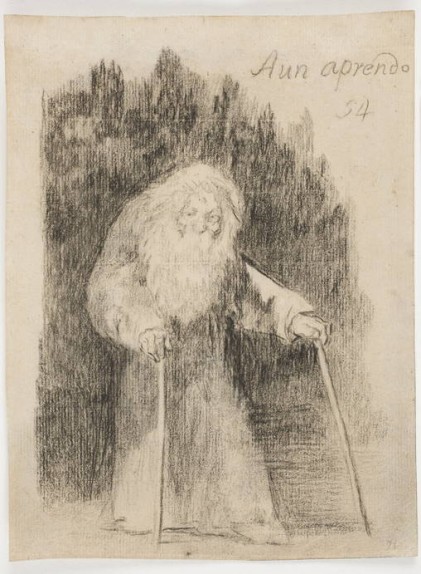We all move throughout life without concerning ourselves with regulating our temperature, or telling our diaphphragm to move, or our pupils to dilate and constrict, or our stomach and intestine to digest our food. We have not to occupy our conscious mind to continuously attend to the extremely complex activity happening in the background of ourbodies because we evolved in such a way that many different systems coexist and cooperate to absolve these "mundane" tasks.
The balance, stability and equilibrium in our body and, in each of the cells forming it, is managed through an extremely complex feedback systems, involving electrical impulses, sudden hormonal releases, chemical changes and many inputs and outputs from our sense organs to our internal organs. As usual to understand a complex system we have to try to organize it in simpler units. Prof. Sherrington divided the autonomic nervous system it in three different branches:
- parasympathetic nervous system (PNS, rest and digest)
- sympathetic nervous system (SNS, fight or flight )
- enteric nervous system (ENS)
funnily enough the ENS was completely neglected in many textbooksoks, and only recently, thanks to the work of pioneers like Prof. M. Gershon started to gain recognition amongst the medical community, but this is another story and I will write another post about it.
The main difference that can be immediately recognized between the PNS and the SNS is anatomical with the SNS signal exciting a whole network of connection and the PNS signals leading to changes only in few welldefined places.
Functionally they are generally thought to produce opposite responses in the body, for instance the PNS constrict the pupils, whereas the SNS dilate them, but it is quite clear that fine tuning of this system must be more complex.
Imagine that you are facing a danger in a situation of bright light. You need to see but the SNS will be activated so the pupils would let pass too much light to see clearly. Given the extreme variability of the external conditions, the system needs to adapt in real time and allow for extremely fine tuning!
The Vagus is one of the most important nerve of our body, as some of its branches connect the PNS not only with the heart but also with lungs and the ENS. The Polyvagal theory was introduced by Dr. Stephen Porges in an effort to reconcile what he observed and described as the Vagal paradox: .
- Increased vagal tone (high PNS activity) produces bradycardia (dangerous slowing of the heart)
- Decreased vagal tone (low PNS activity) suppresses respiratory sinus arrhythmia (RSA)
- Bradycardia occurs during periods of suppressed RSA.
I took a long time to understand the paradox, hidden through the complexity of the medical vocabulary!
Even during a single breathing cycle our body goes through an oscillation between the SNS (inhale) and the PNS (exhale) - this is why some Feldenkrais ATM specifically indicate to move on the exhale - the RSA is the slowing down of our heartbeat on the exhale. This difference or arrythmia is larger in healthy newborns, however if the RSA is suppressed, so there is no or little increased tone from the PNS, we still can have dangerous slowing down of the hearth. So, no matter the vagal tone the PNS still can lead to bradycardia.
The way to reconcile the paradox is to introduce a novel element in this control system, Stephen Porges understood that the different branches of the vagus connecting to the hearth have different roles.
This faster branch present in mammals has an inhibitory role, i.e. when it provides a signal it prevents the slower and less modulated ancient control centres to operate, and share the control centre with the pharynx, larynx, and soft palate, through a different nerve, so it is also related to our facial expression, and with the middle ear through the auricular branch of the vagus. This social aspect is central to the control system as it allows to detect social cues about the external environment. If a dangerous situation is perceived the inhibitory function of the upper and more modern and modulated control is inhibited and it starts to allow the symphatetic arousal so our body gets into high functioning. This state can't be indefinitely maintained as it burns too much energy so, the oldest branch of the vagus, the dorsoventral, a slow unmyelinated fibre, can shut down the body if we are in a mortal danger that we can't elude. As any opportunity to escape can lead to survival, the shutdown can be suddenly reversed to a flight/flight response. In mammals if this cycle happens too frequently, without an adequate recovery it can lead to dead, this is the experience of a mouse that a cat lets artfully "escape".
The conscious mind would be too slow to deal with dangerous situation, so in the same way that an arc reflex is the fastest way to remove our hands from the fire, the hierarchical organization of the vagus deals with life threatens.
To summarize, the modern and ancient systems have to cooperate and they are equally important in assuring our survival. The more modern branch is the one that regulates the normal oscillation in the vagal tone that allow us to recover and socialize, if this vagal brake does not work properly, the system is dysregulated but a traumatic experience would be unbearable if we didn't have the most ancient system in place.
We can think of PTSD as a situation where the person is trapped in a state where the modern part of the vagus is no longer able to function properly, and it gives up the inhibitory function too quickly.
Dr. P. Levine proposes an interesting therapeutic approach based on the observation of a natural cycle of recovery from stressful situations in mammals, patients and himself to help to restore the correct regulation of the system.
Porges et al. found that there is a competition between the myelination process and the reinforcement of the unmylinated, oldest part of the vagus. This is in line with the original idea of Sherrington about the inhibitory role of upper, more modern, structures in the brain on the lower, more ancient parts of the brain, as well as with the principle of Jacksonian dissolution: new adaptations come first, older systems are deployed if they fail. On this view, the three autonomic systems form a phylogenetically ordered hierarchy of responses.
Implications and Possible Developments
Interestingly as the myelination process is not complete at birth, issues with the myelination process of the modern part of the vagus could be related to issues with affect regulations or even with Autism. A question that occurred to me naturally is if issues with the development of the social, myelinated, part of the vagus can also lead to a delay in the development of the mirror neurons. We now know that many parts of the brain can only develop if activated from our sensory organs, so if a baby is unable to mimic the facial response of the parents because the engagement part of the brain is not properly developed will he/she have an opportunity to engage the mirror neurons?
Another aspect that deserves further investigation is that they can provide afresh and more modern point of view on the relation found by Dr. A. Tomatis and Guy Bérard several years ago between deafness to certain frequency and suicidal tendencies, as well as an insight into the still debated effect of the Tomatis method on autistic children.
Certainly, the anomaly in the RSA, indicating a ill-regulated vagal control, can be present in many different conditions, but many illnesses can produce one common manifestation and have profoundly different origins. However, we need always to be very careful about how much we can extend a theory.
It is like saying that all the skin rashes can be due to the same disease whilst there can be variations that we are just not able to distinguish yet. There is such a variation of symptoms and such a complexity in our organism that we need to maintain an open mind about possible malfunctioning. I briefly mentioned the ENS system and not only the role of the guts, but also the role of the microbiota on our behaviour is only started to be explored.
The polyvagal theory can certainly pave the way to a better understanding of the ANS and it is already helping to look into novel approach to recover from traumatic experiences.
As Feldenkrais practitioner it is extremely important for me to look at the person in her integrity and consider all the possible routes to improve her wellbeing and support and assist the person in her development in a safe and supportive environment.

When we visited Utö, the most outer island of this beautiful archipelago in the place we call Finland, I allowed myself to be guided by the incredible energy of Inca, the daughter of the family we were visiting there. She took me to a series of abandoned bunkers from the times this island was a military strategic point and there I found this graffiti that represent very well the feeling of all that has to do with military, war, conflict and drama.


